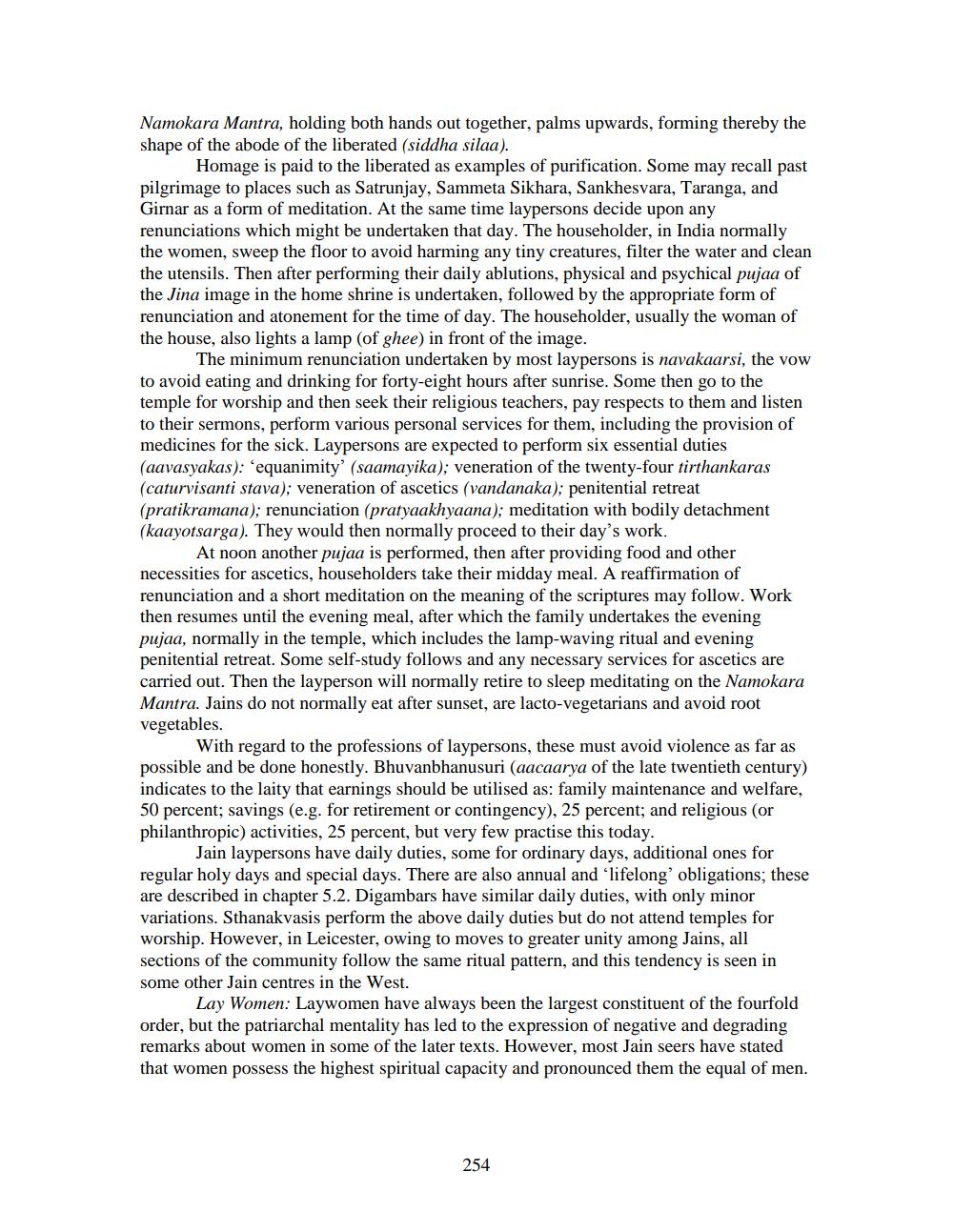________________
Namokara Mantra, holding both hands out together, palms upwards, forming thereby the shape of the abode of the liberated (siddha silaa).
Homage is paid to the liberated as examples of purification. Some may recall past pilgrimage to places such as Satrunjay, Sammeta Sikhara, Sankhesvara, Taranga, and Girnar as a form of meditation. At the same time laypersons decide upon any renunciations which might be undertaken that day. The householder, in India normally the women, sweep the floor to avoid harming any tiny creatures, filter the water and clean the utensils. Then after performing their daily ablutions, physical and psychical pujaa of the Jina image in the home shrine is undertaken, followed by the appropriate form of renunciation and atonement for the time of day. The householder, usually the woman of the house, also lights a lamp (of ghee) in front of the image.
The minimum renunciation undertaken by most laypersons is navakaarsi, the vow to avoid eating and drinking for forty-eight hours after sunrise. Some then go to the temple for worship and then seek their religious teachers, pay respects to them and listen to their sermons, perform various personal services for them, including the provision of medicines for the sick. Laypersons are expected to perform six essential duties (aavasyakas): 'equanimity' (saamayika); veneration of the twenty-four tirthankaras (caturvisanti stava); veneration of ascetics (vandanaka); penitential retreat (pratikramana); renunciation (pratyaakhyaana); meditation with bodily detachment (kaayotsarga). They would then normally proceed to their day's work.
At noon another pujaa is performed, then after providing food and other necessities for ascetics, householders take their midday meal. A reaffirmation of renunciation and a short meditation on the meaning of the scriptures may follow. Work then resumes until the evening meal, after which the family undertakes the evening pujaa, normally in the temple, which includes the lamp-waving ritual and evening penitential retreat. Some self-study follows and any necessary services for ascetics are carried out. Then the layperson will normally retire to sleep meditating on the Namokara Mantra. Jains do not normally eat after sunset, are lacto-vegetarians and avoid root vegetables.
With regard to the professions of laypersons, these must avoid violence as far as possible and be done honestly. Bhuvanbhanusuri (aacaarya of the late twentieth century) indicates to the laity that earnings should be utilised as: family maintenance and welfare, 50 percent; savings (e.g. for retirement or contingency), 25 percent; and religious (or philanthropic) activities, 25 percent, but very few practise this today.
Jain laypersons have daily duties, some for ordinary days, additional ones for regular holy days and special days. There are also annual and 'lifelong' obligations; these are described in chapter 5.2. Digambars have similar daily duties, with only minor variations. Sthanakvasis perform the above daily duties but do not attend temples for worship. However, in Leicester, owing to moves to greater unity among Jains, all sections of the community follow the same ritual pattern, and this tendency is seen in some other Jain centres in the West.
Lay Women: Laywomen have always been the largest constituent of the fourfold order, but the patriarchal mentality has led to the expression of negative and degrading remarks about women in some of the later texts. However, most Jain seers have stated that women possess the highest spiritual capacity and pronounced them the equal of men.
254




